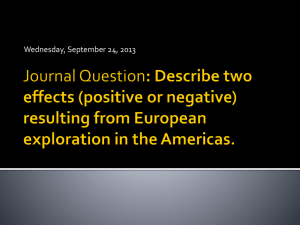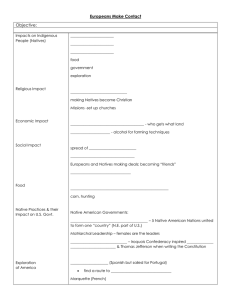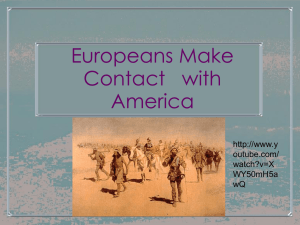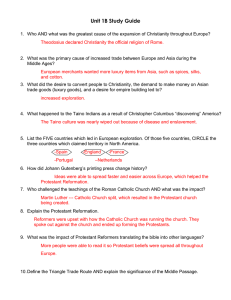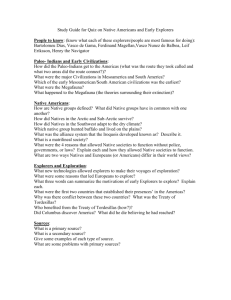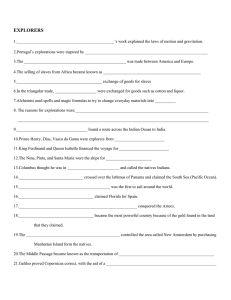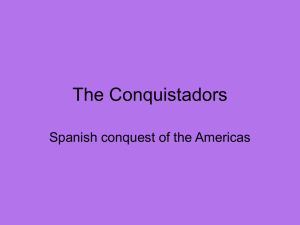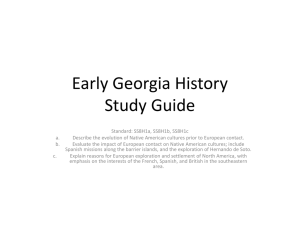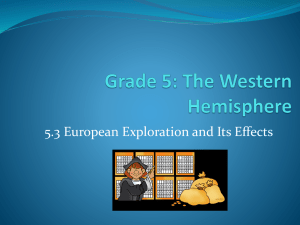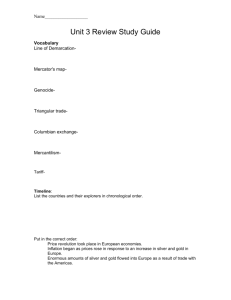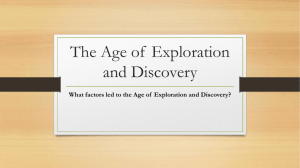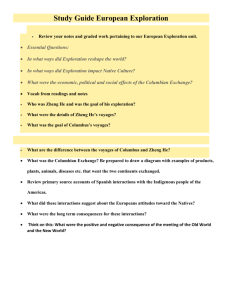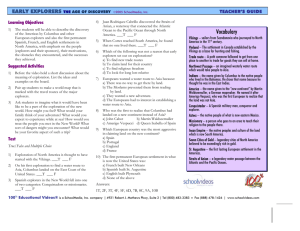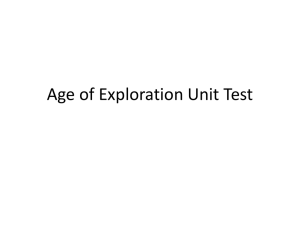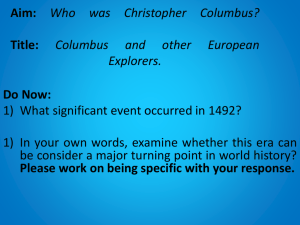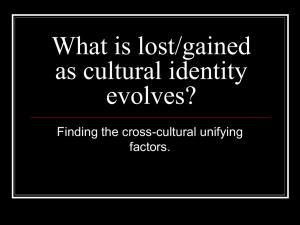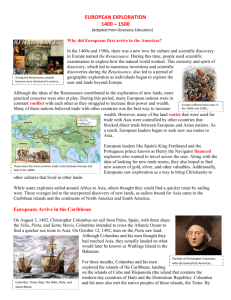Age of Exploration DBQ - Littlemiamischools.org
advertisement
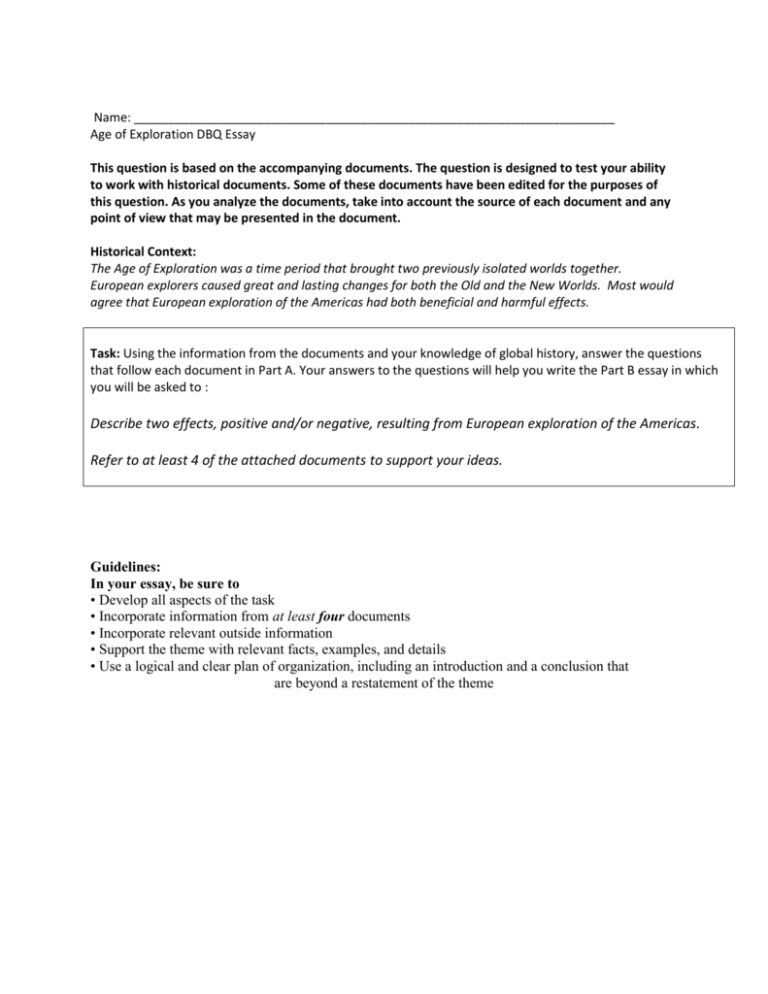
Name: ______________________________________________________________________ Age of Exploration DBQ Essay This question is based on the accompanying documents. The question is designed to test your ability to work with historical documents. Some of these documents have been edited for the purposes of this question. As you analyze the documents, take into account the source of each document and any point of view that may be presented in the document. Historical Context: The Age of Exploration was a time period that brought two previously isolated worlds together. European explorers caused great and lasting changes for both the Old and the New Worlds. Most would agree that European exploration of the Americas had both beneficial and harmful effects. Task: Using the information from the documents and your knowledge of global history, answer the questions that follow each document in Part A. Your answers to the questions will help you write the Part B essay in which you will be asked to : Describe two effects, positive and/or negative, resulting from European exploration of the Americas. Refer to at least 4 of the attached documents to support your ideas. Guidelines: In your essay, be sure to • Develop all aspects of the task • Incorporate information from at least four documents • Incorporate relevant outside information • Support the theme with relevant facts, examples, and details • Use a logical and clear plan of organization, including an introduction and a conclusion that are beyond a restatement of the theme Document 1: Spaniards are cutting off the hands of Natives for not meeting their gold quota. 1. Why did the Spanish cut the hands off of the Natives? 2. What is the relationship between the Spaniards and the Natives at the time of this image? Document 2: From Disease and Catastrophe (David Walbert, LearnNC, no date): “But even the Black Death can’t compare to the devastation of the indigenous (native) peoples of North and South America. Hit by wave after wave of multiple diseases to which they had utterly no resistance, they died by the millions. Disease spread from the paths of explorers and the sites of colonization like a stain from a drop of ink on a paper towel. In fact, in North America, disease spread faster than European colonization. When Hernando de Soto explored the Mississippi Valley in the early 1500s he found large, thriving cities connected by networks of trade. By the time Rene-Robert de La Salle followed de Soto’s footsteps in the 1680s, those cities had evaporated.” 3. Why did so many native people die in the Americas after contact with European explorers? 4. What evidence is offered by the author to show that millions of native Americans died from disease? Document 3: “Three days after I captured this city, some of the Indians who lived here came to offer to make peace. They brought me some turquoises and poor mantles, and I received them in His Majesty’s name with as good a speech as I could, making them understand the purpose of my coming to this country, which is, in the name of His Majesty and by the commands of Your Lordship, that they and all others in this province should become Christians and should know the true God for their Lord . . .” Coronado’s Report to Viceroy Mendoza – August 3, 1540 5. According to Coronado’s Report, what was the purpose of his coming to North America? Document 4: From a letter by Christopher Columbus, October 12, 1492 “ I gave to them some red caps, and to others glass beads, which they hung about their necks, and many other things of slight value, in which they took much pleasure…They all go quite naked as their mothers bore them. None of them more than 30 years old, very well built, of very handsome bodies and very fine faces. They ought to be good servants and of good skill, for I see that they repeat very quickly whatever is said to them.” - Has been modified. 6. What qualities does Christopher Columbus describe in the Natives? 7. How does Columbus view his future relationship with “them”? Document 5: 8. How does this image show the change in lifestyle experienced by the Native population when the Europeans declared the America’s as a colony? Document 6: From The Columbian Exchange at a Glance (David Walbert, LearnNC, no date): Old World → New World horses cattle pigs sheep Domestic animals goats chickens Crops Diseases New World → Old World turkeys llamas alpacas guinea pigs maize (corn) potatoes sweet potatoes cassava peanuts tobacco squash peppers tomatoes pumpkins cacao (the source of chocolate) sunflowers pineapples avocados vanilla syphilis (possibly) rice wheat barley oats coffee sugar cane citrus fruits bananas melons Kentucky bluegrass smallpox measles mumps malaria yellow fever influenza whooping cough typhus chicken pox the common cold 9. According to the chart, what are two things that moved from the Old World to The New World? 10. According to the chart, what are two things that moved from the New World to the Old World?
